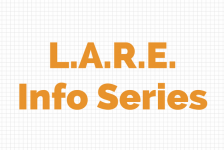As companies built on strong long-term relationships and a commitment to client service, landscape architecture firms thrive when employees deliver high-quality results every time. Recruiting and retaining high quality design and planning talent is critical to achieving this. Retention of top talent goes beyond benefits and compensation, it requires a strong corporate culture that provides employees a stake in the organization. In fact, research continues to demonstrate that employees who have a stake – either through profit sharing or ownership shares — in the company they work for tend to be happier, more committed employees.
In 2020, amidst a global pandemic and a time major uncertainty, Design Workshop announced its 100% Employee Stock Ownership Program (ESOP) giving employees something to be certain about – their role as an employee owner. Under this plan, ownership of the company is held in an ESOP Trust, funded entirely by company contributions, and all employees participate. This is designed as a long-term retirement benefit, with the employees’ accounts increasing as the value of the business increases. ESOPs provide long-term stability and a wealth building benefit for design and planning talent. More than 15 years in the making, establishing an ESOP was the natural next step to not only plan for the next generation of the firm but to embrace culture that believes in the “I win, you win, we all win” mentality.
Design Workshop is one of only approximately 6,700 ESOPs in the US making industry best practices for the transition to an ESOP a bit harder to come by. Now that we are nearly a full year into our ESOP, our team has compiled our five best practices for landscape architecture firms interested in transitioning to ESOPs.
1. Plan ahead
Take the time to understand the various ESOP structures. Identify the team who will lead the effort, regularly meet and assign responsibilities. This group will drive the conversion process. Make sure that your current shareholders understand the transition and its impacts.
2. Educate
There is much to learn about all the elements of ESOPs from creation to execution. Fortunately, there are excellent organizations that provide education and resource – the National Center for Employee Ownership and the ESOP Association. Both organizations offer a wealth of informational materials, message boards and events for ESOPs around the nation. It’s important to also surround the company with knowledgeable and reputable experts on conversion to an ESOP. Obtain recommendations for these experts from other ESOP companies and ESOP consultants. Interview each of them to determine the best fit for your organization. It can be costly, but well worth the cost to execute the transition properly. Plus, the more you learn along the way, the more you are able to do independently. Our team included an: ESOP attorney, ESOP Independent Trustee, Valuation Consultant (engaged by the Independent Trustee), Corporate attorneys to assist with shareholder buyout documents, Accountants, a Third Party Administrator (TPA), Communication consultants and a bank (if external debt will be needed).
3. Engage your internal ESOP team
Select people to be part of the ESOP team responsible for providing employee owners with educational opportunities, resources, and assistance that increases the common knowledge of the ESOPs. This team will act as internal advocates for staff working to instill a culture of teamwork, communication, positivity, productivity and creativity amongst all employee owners. Soliciting applications for the ESOP team and implementing term limits ensures a broad proud of people have the opportunity to participate.
4. Communicate
Proactively communications about what an ESOP is, how it works and what the employee’s responsibilities are is critical to your success. Develop key messages and ensure the team uses them. Create educational materials for employees that outline the benefits responsibilities of an employee owner. Continue to communicate information about ESOP and responsibilities of an employee owner every chance you get.
5. Develop a culture of employee ownership
Employees look at their own role more broadly when they own the company so find ways to provide opportunities for them to engage. The ESOP team can manage an education and engagement calendar for the organization to consistently spread the your key messages. Make it fun for everyone.
Becoming an ESOP in a pandemic where most people are working virtually hasn’t been easy, but Design Workshop succeeded in making it happen. Amidst a period of uncertainly and challenges, we created an opportunity for our employees to have an interest in the growth and success of our firm. Our shared investment means that we are all dedicated to continuing to collaborate and providing value to our clients. We continue to educate our employees about their important role in the firm and what the ESOP means to them, both now and well into their future.
Published in Blog, Cover Story, Featured







